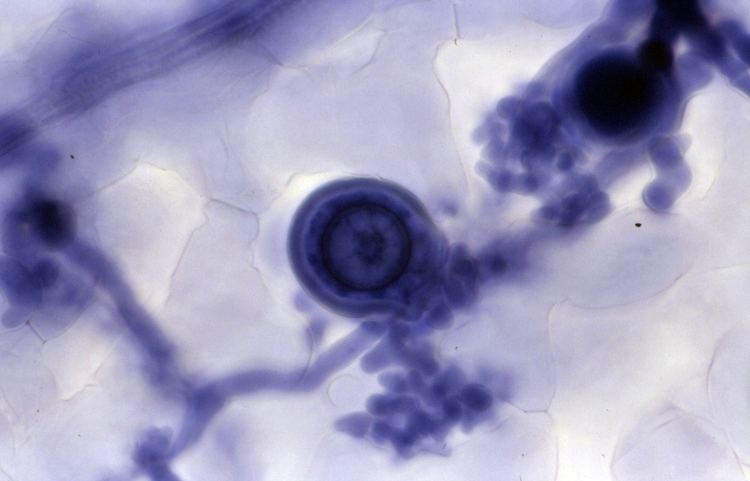Formula C34H28N6O14S4 | Molar mass 872.88 g/mol | |
 | ||
IUPAC ID (3Z,3'Z)-3,3'-[(3,3'-dimethylbiphenyl-4,4'-diyl)di(1Z)hydrazin-2-yl-1-ylidene]bis(5-amino-4-oxo-3,4-dihydronaphthalene-2,7-disulfonic Appearance deep blue in aqueous solution | ||
Cell counting using the trypan blue exclusion method
Trypan blue is a vital stain used to selectively colour dead tissues or cells blue. It is a diazo dye.
Contents
- Cell counting using the trypan blue exclusion method
- Background chemistry
- Uses of trypan blue
- Synonyms
- References
Live cells or tissues with intact cell membranes are not coloured. Since cells are very selective in the compounds that pass through the membrane, in a viable cell trypan blue is not absorbed; however, it traverses the membrane in a dead cell. Hence, dead cells are shown as a distinctive blue colour under a microscope. Since live cells are excluded from staining, this staining method is also described as a dye exclusion method. This dye may be a cause of certain birth defects such as encephalocele.
Background & chemistry
Trypan blue is derived from toluidine, that is, any of several isomeric bases, C14H16N2, derived from toluene. Trypan blue is so-called because it can kill trypanosomes, the parasites that cause sleeping sickness. An analog of trypan blue, suramin is used pharmacologically against trypanosomiasis. Trypan blue is also known as diamine blue and Niagara blue.
The extinction coefficient for trypan blue is 6 x 104 M−1 cm−1 at 607nm in methanol.
Trypan red and Trypan blue were first synthesized by the German scientist Paul Ehrlich in 1904.
Uses of trypan blue
Trypan blue is commonly used in microscopy (for cell counting) and in laboratory mice for assessment of tissue viability. The method cannot distinguish between necrotic and apoptotic cells.
It may be used to observe fungal hyphae and stramenopiles.
Trypan blue is also used in ophthalmic cataract surgery to stain the anterior capsule in the presence of a mature cataract, to aid in visualization, before creating the continuous curvilinear capsulorhexis.
In early 20th century, the existence of a barrier protective toward the brain (blood brain barrier) was inferred upon based on the observation that injection of trypan blue to animals led to whole‐body staining except for the brain and spinal cord.
